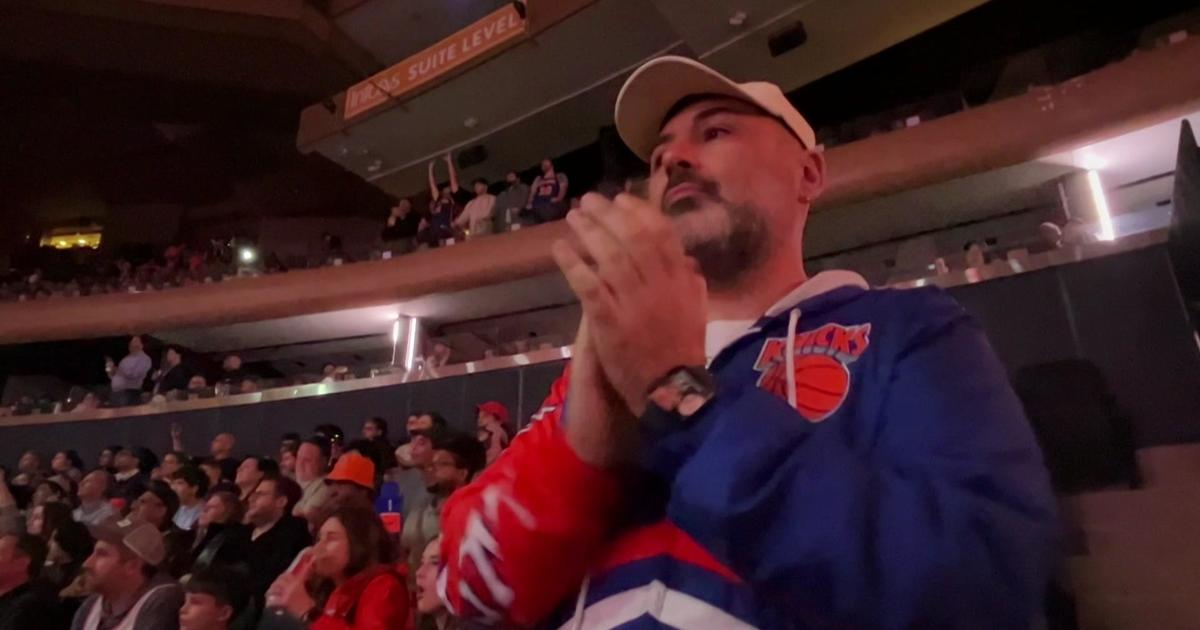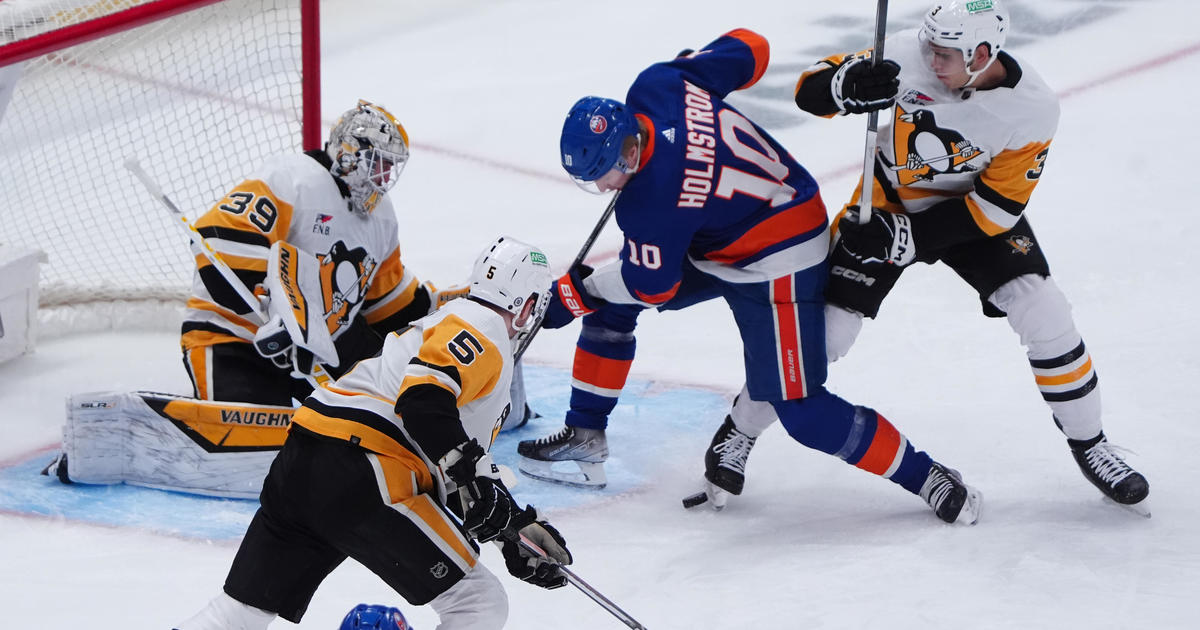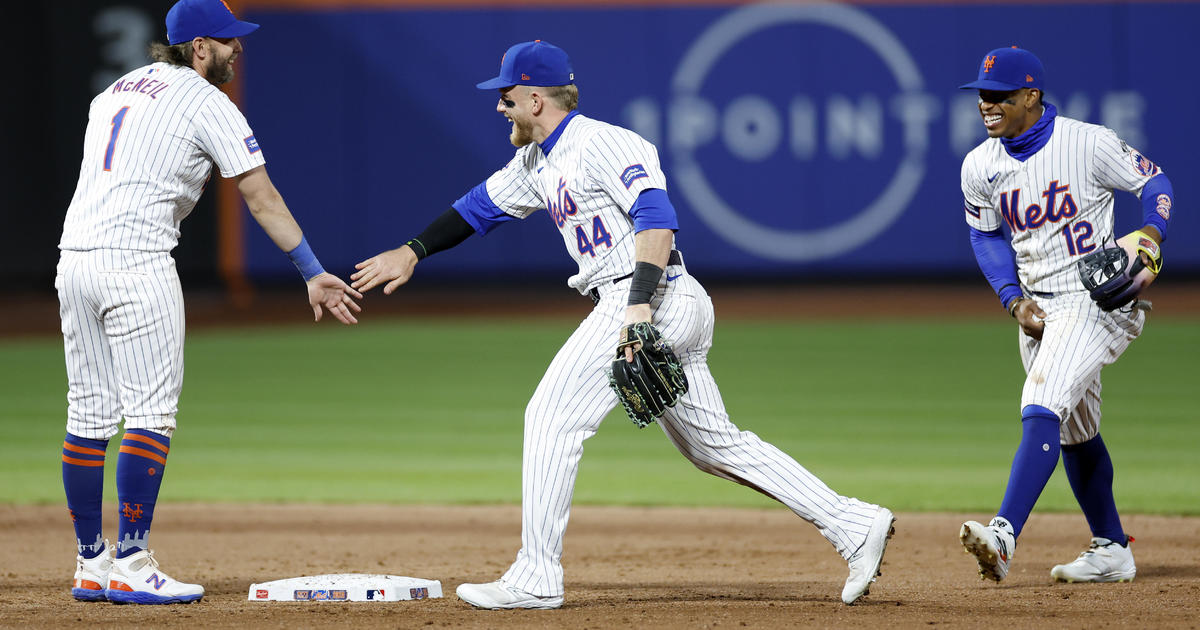Lichtenstein: Power Of 3 — Nets Continue Hot Shooting From Deep
By Steve Lichtenstein
» More Columns
My eight-year-old daughter, Charlotte, loves those old "Schoolhouse Rock!" videos. Her favorite is "Three is A Magic Number."
The way the Nets are executing their offense these days, it wouldn't surprise me if that also happened to be the updated title of their playbook.
The Nets' 114-99 home victory over Minnesota on Sunday night should be marked as Exhibit A at next year's Sloan Sports Analytics Conference at MIT.
Of those 114 points, the Nets scored 56 points in the paint, knocked down 12 three-pointers and converted 16 free-throw opportunities. That leaves just six points -- three buckets -- from mid-range jumpers that analyzers of basketball metrics demonize as inefficient.
But in this recent stretch, during which the Nets have won 13 of their last 17 games, it's the three-point field-goal attempts that stand out the most.
Simple school-age mathematics prove that teams that make more than 33 percent of their three-point shots will exceed the point total of those that shoot 50 percent from the floor inside the arc. The league trend continues to bend more to the three-point shot, as the number of threes taken per game by the average NBA team during 2013-14 is on pace to shatter last season's all-time record of 19.9.
No one in the NBA shoots more threes than Houston, whose general manager -- Daryl Morey -- is an icon at the Sloan Conference. The Rockets have hoisted 26.1 shots per game from behind the arc this season.
The Nets have averaged 27 three-pointers attempted during this 17-game run. Sunday night was the Nets' fifth straight game in which they've taken at least 29 three-point shots.
Fortunately, they've been hitting them at a nearly 40 percent clip, which is the fifth-best efficiency in the league in that 17-game period. They've been even more dynamite at Barclays Center, shooting 45.4 percent from three-point range -- tops in the NBA.
The Timberwolves were the latest team to face the onslaught from deep, especially in the first and fourth quarters when the Nets combined to hit on 10 of 20 three-pointers.
This was a game where I expected the Nets to struggle, given Minnesota's bulky front line of center Nikola Pekovic (who looks like he just escaped from the Phantom Zone along with General Zod) and All-Star power forward Kevin Love.
But the Nets had forward Paul Pierce, who for the second consecutive game started out on fire from three-point land. After helping the Nets keep pace with Cleveland with 17 first-quarter points on 4-for-4 shooting from three-point territory on Friday, Pierce again took over the offensive load, though he did misfire on one trey on Sunday night.
Still, Pierce's 16 points in the opening frame enabled the Nets to stay close until their superior bench helped them build a 13-point lead midway through the second quarter.
And when the game tightened early in the fourth quarter, the three-ball again came to the rescue. Reserve swingman Alan Anderson was the designated bomber, knocking down three critical three-pointers in the first six minutes to give the Nets a double-digit lead.
This reliance on the long ball is a rather recent development in Brooklyn -- albeit logical in its evolution.
The Nets' best low-post scorer -- All-Star center Brook Lopez -- was lost for the season when he broke a bone in his foot and tore a tendon in his ankle in a late-December loss in Philadelphia. Coach Jason Kidd adjusted his starting unit upon the New Year to put Pierce, who has played on the wing for almost all of his 15 seasons in the league, at power forward.
Ever since, nearly every team event has resulted in further emphasis of the strategy of stretching the floor to look for more three-point opportunities.
There was the deadline trade to obtain backup shooting guard Marcus Thornton, who plays as if his peripheral vision is limited to the hoop. Thornton, who exited prematurely last night after aggravating a lower-back injury, is a pure gunner who on any given night has the ability to alter a game's course in one of two opposite directions.
Then came the injuries to starting center Kevin Garnett and reserve forward Andrei Kirilenko. At the time he began incurring back spasms, Garnett was a weapon from mid-range. In his place for the last 16 games, rookie Mason Plumlee has tended to gravitate towards the rim where he can benefit from alley-oops and put-backs, while the added spacing has freed up the longer-range shooters.
Meanwhile, Kirilenko was struggling to score from anywhere outside of the paint. His absence in the last four games due to a sprained ankle has forced Kidd to go with Mirza Teletovic for longer runs. The vast majority of Teletovic's shots come from behind the three-point line. Despite what up close looks like an up-and-down season, Teletovic is still converting on over 38 percent of his three-pointers, which ranks sixth among NBA power forwards, just a couple of ticks less than the coveted Love.
The Nets run an inverted offense on almost every trip. The two "bigs" are often stationed just above the elbows where they can dive to the basket on pick-and-rolls or pop out to the three-point line. Any low-post plays are run for guys like Joe Johnson and Shaun Livingston -- two lifelong guards who happen to have height advantages over most of their opposing numbers.
Even on those isolations, the ball is likely to move as the defense adjusts to the threats. The Nets rarely take three-pointers that are contested unless the shot clock is about to expire.
It's been beautiful to watch, as the Nets topped 100 points for the eighth straight game last night.
The Nets do have to do a better job of taking care of the ball than they did on Sunday night. The Nets' overpassing contributed to 20 turnovers, which saved the Wolves from an earlier knockout.
The other concern is that the postseason tends to be a different animal. NBA graveyards are full of teams who have succumbed to excessive three-point shooting, including Kidd's 2013 Knicks.
The Nets don't have that one superstar -- a LeBron James or Kevin Durant -- who they rely on to get them a basket at the most urgent moments.
It will be interesting to see if Kidd's team-centric approach with a heavy dose of three-point attempts can succeed in the playoffs, or if the magic will run out.
For a FAN's perspective of the Nets, Jets and the NHL, follow Steve on Twitter @SteveLichtenst1.
You May Also Be Interested In These Stories



